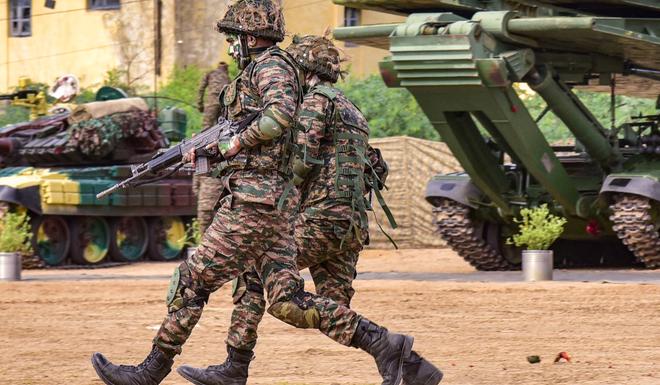Published 23:40 IST, July 31st 2024
EXCLUSIVE/ Several Defence Reform Committees Had Highlighted Need For Agniveer-Like Scheme
Documents accessed exclusively by Republic showed that several defence reform committees had highlighted the need for Agniveer-like schemes in 90's and 2000's.

New Delhi: The Agniveer scheme also known as the Agnipath scheme sought to modernise and streamline the recruitment process in the Indian armed forces by introducing a short-term service model.
Amid the Opposition's demand for the rollback of the Agniveer scheme in the Armed Forces, documents accessed exclusively by Republic showed that several defence reform committees had highlighted the need for Agniveer-like schemes back in the 90s and early 2000s.
Arun Singh Committee (1989)
Then Defence Minister Sharad Pawar, in a response to the Arun Singh Committee formed in 1989, had remarked that the recommendations related primarily to measures for achieving economy and securing optimal utilisation of available resources.
He said the recommendations did not deal specifically with the issue of technological upgradation of the Indian Defence Forces.
Pawar added the missiles and other sophisticated armaments in their holdings, the Defence Forces of the country were fully capable of countering any threat from potential adversaries in our neighbourhood.
Minister of State NVN Somu while responding to a Parliamentary Question on 19 March 1997, when the Defence Ministry was helmed by the late Mulayam Singh Yadav, said a number of recommendations were made by the Committee on Defence Expenditure, headed by Singh, in a series of reports, which the Committee itself classified as “Secret”.
Kargil Review Committee (2000)
Defence Minister George Fernandes while responding to a parliamentary question on March 9, 2000, on the Kargil Review Committee had said the recommendations made by the Committee were considered.
Fernandes said those in the category of acquisition of equipment for surveillance and communication interception and encryption and decryption were accepted, in principle, for implementation.
He said the recommendations that mainly dealt with improvement in the areas of intelligence, manpower management and structure and interface between the Ministry of Defence and the Services HQs at the apex level, were by way of general suggestions, which needed to be developed into specific actionable policies and programmes.
GoM Report – Reforming the National Security System (2001)
Fernandes outlined a list of recommendations by the GoM (Group of Ministers) during the Parliamentary session that included the redesignation of Service Hqrs as `Integrated Headquarters,' creation of the Chief of Defence Staff (CDS), to name a few.
5th& 6th Pay Commission Reports
When the Defence Ministry was led by the late AK Antony, both reports emphasised maintaining a youthful profile for the Army and were submitted to the government. These reports were approved and notified by the respective governments both times.
Standing Committee on Defence 2006 Submitted in Lok Sabha and Rajya Sabha in July 2007
The report stated that the Committee endorsed the view of the Group of Ministers (GoM) that the armed forces needed to maintain a younger age profile so that they were at their fighting best at all times.
The report was submitted to Lok Sabha and Rajya Sabha in July 2007, when Dr Manmohan Singh was the Prime Minister.
Shekatkar Committee (2017) Established by Manohar Parrikar
The report was taken up by the Ministry of Defence led by Nirmala Sitharaman to frame key action points and a roadmap for implementation. Measures as recommended by the Committee and taken up for implementation.
A total of 99 recommendations were forwarded for implementation to concerned agencies/stakeholders.
The complete details of the report and its recommendations were not placed in the public domain as the covered operational aspects of the armed forces, disclosure of which was not in the interest of national security.
Agniveer Scheme Will Keep Our Forces Battle-Ready, Young: Sitharaman
Finance Minister Nirmala Sitharaman, while speaking in the Rajya Sabha on Wednesday, said the Agniveer scheme would help keep the armed forces 'battle-ready' and young. Furthermore, she asserted that there was no need to 'politicise' the same.
Dismissing criticism over the scheme by the Opposition, Sitharaman said that recruiting young people in the age group of 17-21 years would ensure that India had fit soldiers on the front line.
Sitharaman said one of the expected outcomes of the scheme was that the armed forces would have a younger force by recruiting those in the age bracket of 17-21 years.
She added, "I don't think there is a need for us to unnecessarily worry that this is causing some kind of distortion. Not at all. It is with the acceptance of the armed forces that it has been brought in."
She emphasised that the Agniveer scheme was crucial and the country needed to have a greater sense of looking at the national interest.
Updated 23:45 IST, July 31st 2024


